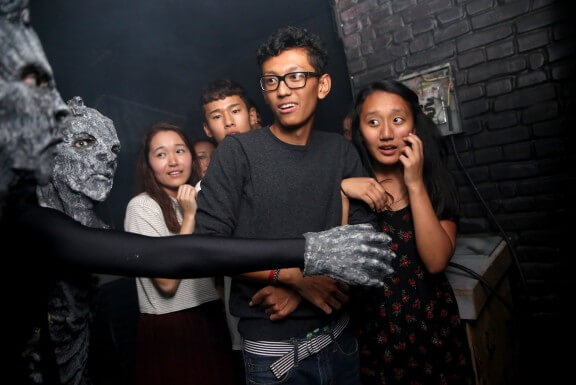 Renee Adoree and John Gilbert play lovers torn apart by war in “The Big Parade.”
Renee Adoree and John Gilbert play lovers torn apart by war in “The Big Parade.”
Credit: Turner Home Entertainment
‘The Big Parade’
$29.95
Warner Bros. Home Video
It wasn’t until “Gone With the Wind” in 1939 that MGM had a bigger hit than “The Big Parade,” a 1925 war spectacular that may have made more money than even “The Birth of a Nation.” (Financial documents from the era aren’t so trustworthy.) So how come it’s only now making its digital debut? It’s a complicated story, partly attributable to the only known pristine film print being long mislabeled. Even the super-successes can be “lost” due to bureaucratic mishaps.
Whatever the case, “The Big Parade” is one of the more “accessible” of the silent era giants. The pre-sound era can seem to modern viewers like a lot of work: In an interview with its director, King Vidor — who made it when he was a 30 year old tyro — he admits that audiences of the time were used to paying complete attention to the purely visual films flickering before them, not succumbing to idle distractions.
That’s overstating how alien the period’s films can seem today. “The Big Parade” has a direct and relatively plain style, at least as compared with stylists like Josef von Sternberg or Erich von Stroheim. And the story he tells is deceptively simple: Three men — a wealthy scion (John Gilbert) and two working class stooges (Robert Ober and Karl Dane) — get swept up in WWI fever and enlist as infantrymen. Overseas, Gilbert’s Jim Apperson falls for a nice French girl (Renee Adoree — not her real name), right before he’s sent on what’s essentially a suicide mission.
“The Big Parade” is of the kind termed “gearshift film”: movies that suddenly kick into a higher gear in its back stretch. The first 90 minutes are a mix of comedy, romance and patriotism, albeit of the subtly critical kind. It’s neither anti- or pro-war (though Vidor was personally anti-), but its view of war is that it chews up the working class grunts. This comes to a head in the nightmarish battle sequences of its last hour, with our heroes stranded in foxholes at nighttime, petrified to be ripped by machine gun fire.
Of the three characters, it’s never in doubt which will definitely make it out alive. (Though even he suffers an unusual handicap for a protagonist.) Gilbert was at the time one of the biggest movie stars, comparable in lustful popularity to Rudolph Valentino. His performance is not only remarkably anti-star — he did not rock his usual pencil-thin mustache — but naturalistic.
That’s partly because MGM shot their silents slower than the other studios. Where most silents were shot at higher frame rates that makes the action look like it’s in slight fast-forward, films like “The Big Parade” run at almost the speed of a talkie, giving the performances a realistic quality. Silent films shouldn’t be judged for how easily they are to watch for modern audiences, especially the sect of modern audiences that wouldn’t be caught dead watching old films. But even moreso than most films from the era, “The Big Parade” feels close to timeless, not to mention an ideal Hollywood product, with a deft balance between comedy and drama, spectacle and recognizable humanity.
The Vincent Price Collection
$79.97
Shout Factory
An epicene ham who was capable of strong dramatic turns — see his younger self in Otto Preminger’s “Laura” and Samuel Fuller’s “The Baron of Arizona” — Price carved out a niche as an arch spookster. This six film collection grabs from his ‘60s and ‘70s period, where a talent turned into delightful shtick. Half of these are from the many Edgar Allan Poe films Roger Corman cranked out in the ‘60s. Unusually tony for the producer if almost never faithful, they reach their zenith in “The Masque of the Red Death,” in which a slender short about a plague wiping out a wealthy ball becomes a relentless eye sore, with bold colors from cinematographer and future director Nicolas Roeg (“Performance,” “The Man Who Fell to Earth”). Also included are “Witchfinder General” and “The Abominable Dr. Phibes.”
In brief
‘The Conjuring’
For reasons that elude us, the goosebumpiest film didn’t come out around the holiday but smack in the middle of summer.
‘The Uninvited’
The Criterion Collection turns to this atmospheric 1944 haunted house jaunt, with plucky Ray Milland an outside-the-box choice to fraternize with ghosts.
‘Before Midnight’
Horror is rarely actually scary. For something truly terrifying, check out this threequel, which finds ideal lovers Julie Delpy and Ethan Hawke realizing they’re perhaps no longer in love. If it can’t work out for pretty fictional characters, do any of us stand a chance?
















